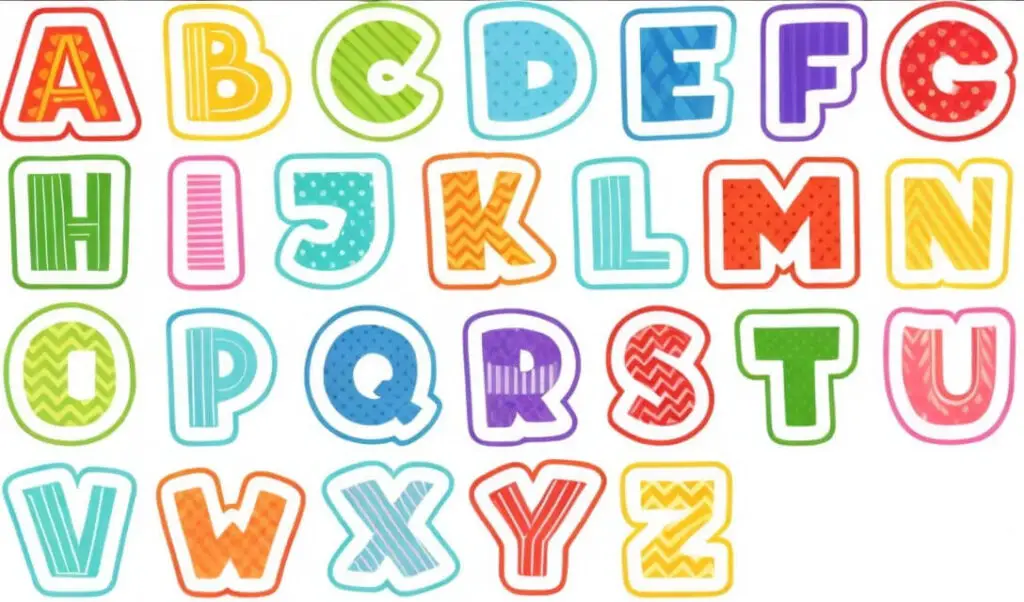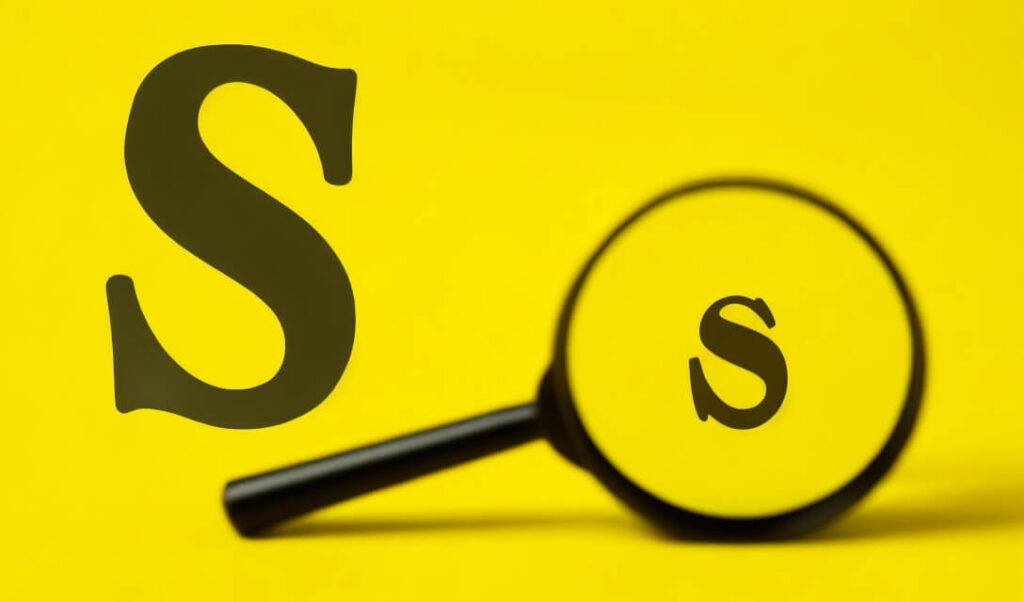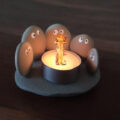Welcome to a captivating journey into the realm of the letter S – an enigmatic symbol that holds remarkable meaning, captivating sounds, and fascinating significance. Nestled in the heart of the English alphabet, the letter S beckons us to explore its mysteries and unravel its hidden depths. In this enthralling exploration, we will delve into the meaning of the letter S, its place in the alphabet, and the diverse array of sounds it produces. Brace yourself for an adventure that will introduce you to the cool, different, and soul-stirring facets of the letter S.
Embarking on this linguistic expedition, we’ll venture beyond the boundaries of mere form and structure to comprehend the inherent grandeur of the letter S. Prepare to encounter the majestic capital S and the humble small S, both contributing their own unique charm to the written word. Through captivating examples and playful exploration, we’ll unravel the secrets of these distinct letter forms. Along the way, we’ll embrace the allure of the big S, allowing it to captivate our imagination and evoke a sense of wonder.
As we dive deeper into the realms of language and communication, we’ll embrace the spirit of curiosity and discovery to learn about the letter S. From words and names that find solace in its embrace to the artistry of cursive and the elegance of Old English and Roman letter S, every stroke and curve will invite us to appreciate the intricate tapestry of written expression. Join us as we traverse the linguistic landscape, uncovering the letter S in different languages, celebrating its double appearances, and exploring the artistic realm of lettering the letter S.
Throughout our exploration, we will seek answers to captivating questions: What number is letter S? Why does this simple yet captivating symbol resonate with humanity across time and cultures? Together, let’s embark on this exhilarating voyage into the depths of the letter S, where the ordinary transforms into the extraordinary, the mundane becomes sublime, and the power of language reveals itself in glorious splendor.
The Letter S in the Alphabet

The English alphabet is a tapestry of symbols, each with its own distinct place and significance. Among these symbols stands the letter S, making its mark as the 19th letter in this rhythmic dance of language. What letter is S in the alphabet? It occupies a position that holds both intrigue and purpose.
As we explore the meaning of the letter S, we begin to unravel the intricate web of connections it weaves within the alphabet. Symbolizing a myriad of sounds and possibilities, the letter S harmonizes with its predecessors and successors, forming the melodic sequence of words and sentences that define our communication. It stands tall, bridging the gap between the rhythmic vibrations of letters that precede it and those that follow in its footsteps.
The letter S is a versatile and multi-faceted character, offering a symphony of sounds to our linguistic repertoire. From the soft whisper of a gentle breeze to the sharp hiss of a snake, the sounds of the letter S resonate through our spoken words, adding a touch of sibilance and melody. It captivates our auditory senses, infusing our conversations with a distinctive flair that sets it apart.
Embracing the cool, different aspects of the letter S, we witness its ability to transform written language with its graceful curves. From the elegant capital S that commands attention with its grandeur to the unassuming small S that dances effortlessly across the page, the letter S adapts to different contexts and moods. It effortlessly combines with other letters to form words that carry meaning, stories, and emotions.
Indeed, the letter S invites us to learn and explore its profound influence on our communication. Its presence is felt in countless names that grace our world, from Samuel to Sophia, from Steven to Sarah. Its playful nature reveals itself in a trove of words with S, each carrying its own significance and contributing to the rich tapestry of language. Why do we gravitate towards this curvaceous character? Perhaps it is the allure of its shape or the melodic charm it brings to our speech.
As we traverse the vast expanse of written expression, we encounter the enchanting world of cursive, the intricate beauty of Old English, and the timeless elegance of Roman letter S. Across cultures and continents, the letter S finds its place in different languages, adopting unique forms and pronunciations that captivate our fascination. It is a testament to the universality of communication, reminding us that despite our differences, we are connected by the power of letters and words.
In the grand tapestry of the alphabet, the letter S stands as a steadfast and captivating character. It symbolizes not only its position but also the magic of sound, the artistry of writing, and the endless possibilities of human expression. So, let us revel in the splendor of the letter S, embracing its position and significance as we continue our exploration into the realm of language and its enchanting symbols.
The Meaning and Significance of the Letter S

The letter S, a seemingly simple symbol, carries profound meaning and significance across cultures and languages. Let us embark on a journey to unravel the layers of its enigmatic essence, exploring its meaning, its role as a cool and different letter, and even its spiritual connotations.
Symbolically, the letter S resonates with various interpretations and depths. Its graceful curves and elegant form evoke a sense of fluidity and movement, representing the ebb and flow of life itself. The meaning of the letter S is often associated with concepts such as strength, serenity, and transformation. As we explore its significance, we uncover its mysterious allure that captivates the human imagination.
Across cultures, the letter S weaves its presence into mythologies and spiritual beliefs. From ancient civilizations to modern societies, it holds a special place in the tapestry of symbolism. In some traditions, it represents the spiritual meaning of the letter S, embodying qualities of wisdom, harmony, and spiritual awakening. Through the lens of mythology, we discover stories where the letter S becomes a key element, unveiling its power to shape narratives and beliefs.
In the realm of linguistics, the letter S demonstrates its versatility and uniqueness. It possesses a distinctive sound that adds a touch of vibrancy to our spoken language. The sounds of the letter S resonate with a crispness, whether it’s the soft whispering sibilance or the bold sharpness it brings to our conversations. Its auditory charm lingers in the air, leaving an indelible mark on our ears and minds.
Beyond its sonic allure, the letter S manifests in various forms and contexts. From the capital S that commands attention with its grandeur to the small S that adds delicate nuances to our words, the letter S assumes different roles in the intricate dance of typography. It blends harmoniously with other letters, forming words that carry meaning, evoke emotions, and ignite our imaginations. As we learn and explore the letter S, we uncover a world brimming with names, words, and expressions that rely on its presence for their existence.
The captivating journey into the realm of the letter S expands beyond language and culture. Across the globe, the letter S takes on diverse shapes and sounds, adapting to the phonetic intricacies of different languages. It gracefully traverses the boundaries of countries and continents, finding its place in words and phrases, while carrying the echoes of ancient tongues and contemporary expressions. Discovering the letter S in different languages reveals the interconnectedness of humanity through the shared threads of communication.
In the realm of calligraphy and artistic expression, the letter S becomes a canvas for creativity. From cursive letter S with its flowing lines to the majestic elegance of Old English and Roman letter S, artists and typographers explore its visual potential, giving it new life through various styles and lettering techniques. The letter S becomes an embodiment of artistic expression, showcasing the intricate interplay between form and meaning.
In conclusion, the letter S transcends its physical appearance and dives into the depths of symbolism, sound, and artistic interpretation. It invites us to reflect on its meaning and significance, to unravel the mysteries it holds, and to appreciate the diverse ways it shapes our world. As we venture further into this exploration, we uncover the profound impact of the letter S, a testament to the captivating and ever-evolving nature of language itself.
Sounds of the Letter S

The letter S, with its sleek and serpentine form, holds a symphony of sounds within its grasp. From gentle whispers to sharp hisses, the sounds of the letter S encompass a spectrum of phonetic expressions. Let’s embark on an auditory exploration, discovering the various ways this cool and different letter dances on our tongues.
- Sibilant S: The most familiar sound associated with the letter S is the sibilant hiss. It is like a soft breath, escaping through slightly parted lips. This sound, known as the voiceless alveolar fricative, adds a touch of elegance to our speech. Say it slowly—sssss. Feel the air gently caress your teeth and tongue.
- Voiced S: In certain contexts, the letter S can take on a voiced sound, known as the voiced alveolar fricative. This sound is softer and less sharp than its sibilant counterpart. It brings warmth and depth to our words, like a gentle breeze rustling through leaves. Try saying zzzzz and notice the subtle vibration of your vocal cords.
- Whistling S: Picture a child blowing through a straw, creating a playful whistling sound. The letter S can mimic this whimsical tone in certain instances, as an aspirated alveolar fricative. It adds a touch of liveliness and melody to our conversations, evoking a sense of wonder and joy.
- Double S: When the letter S appears twice consecutively within a word, it creates a distinct sound that emphasizes its presence. This double dose of sibilance amplifies its impact, as in the word “hiss” or “missile.” The double S delivers a sharper and more pronounced hissing sound, leaving a lasting impression.
- Regional Variations: Across different regions, the pronunciation of the letter S may exhibit subtle nuances and variations. The accents and dialects of English speakers influence the way the letter S is voiced. From the crisp and precise pronunciation in the Northeastern United States to the softer and more relaxed approach in the Southern regions, the sounds of the letter S reflect the rich tapestry of linguistic diversity.
As we navigate the soundscape of the letter S, it’s important to remember that context matters. The sounds can change depending on neighboring letters and the position within a word. Pronunciation guides and examples can aid in mastering the intricacies of this versatile letter.
Examples:
- Sip: Pronounced as the sibilant hiss, it starts with a gentle and delicate sound.
- Rose: Exhibiting the voiced S, it adds a hint of warmth and softness to the word.
- Whistle: Embracing the whistling S, it brings a playful and melodic quality to the pronunciation.
- Mississippi: Highlighting the double S, it amplifies the sharp hissing sound, making a lasting impression.
As you embark on your linguistic journey, embrace the myriad sounds of the letter S. Delve into its intricacies, discovering the nuances and variations that make it a truly fascinating component of our language.
Capital and Small Letter S

Within the realm of typography, the letter S takes on two distinct forms: the capital letter S and the small letter S. While they share the same essence, each carries its own significance and purpose. Let’s explore the differences between these two forms, delving into their appearances, usage, and the unique qualities they bring to the written word.
Capital Letter S: Making a Bold Statement
The capital letter S stands tall and commands attention with its grandeur. Its majestic curves and generous proportions exude a sense of strength and authority. When employed at the beginning of a word or as a proper noun, it imparts a touch of formality and importance to the text.
The capital S finds its place in various contexts, including titles, headings, and names. Its larger size allows it to stand out prominently, catching the reader’s eye and emphasizing the significance of the word it represents. Think of words like “Success,” “Strength,” or “Serenity”—the capital S lends them an air of gravitas, amplifying their impact.
Small Letter S: Versatility in Simplicity
In contrast to its capital counterpart, the small letter S embodies simplicity and versatility. With its delicate curves and modest proportions, it seamlessly integrates into the flow of text, effortlessly connecting with neighboring letters. The small S takes on the role of a silent workhorse, appearing in a multitude of words and sentences.
The small letter S finds its purpose in everyday communication, enabling us to express thoughts, ideas, and emotions. Its unassuming presence lends a sense of familiarity to the written word, like a faithful companion that accompanies us on our literary journey. Whether in sentences, paragraphs, or poetry, the small S contributes to the rhythm and cadence of our writing, shaping our language with its subtle elegance.
Significance and Common Usage
The capital and small letter S serve distinct purposes in the written language, each playing a vital role in effective communication. Understanding their significance and common usage is essential for conveying meaning and clarity in written expression.
- The capital letter S is commonly used:
- At the beginning of sentences, titles, and headings to signify importance and draw attention.
- As the first letter of proper nouns, names, and titles to denote specificity and significance.
- In abbreviations, acronyms, and initialisms where the capitalization follows specific conventions.
- The small letter S is commonly used:
- Within words, sentences, and paragraphs to convey everyday ideas and concepts.
- In conjunction with other letters to form words, allowing for seamless readability.
- In cursive handwriting, where its flowing form adds grace and fluidity to the script.
Embrace the interplay between the capital and small letter S, and you will discover the power they hold in shaping our written language. They are symbols of distinction and versatility, bringing their own unique contributions to the rich tapestry of words that color our world.
Interesting Facts and Trivia about the Letter S

The letter S holds a treasure trove of intriguing facts and trivia, showcasing its significance and influence across languages and cultures. Here, we dive into some captivating aspects of the letter S:
Usage in Specific Languages: The letter S plays a prominent role in various languages, weaving its melodic sound into words and expressions. The letter S In Spanish is pronounced as “es” and graces words like “sí” (yes) and “gracias” (thank you), adding warmth to everyday conversations. Meanwhile, in the romantic language of French, the letter S can occasionally don a cloak of silence, mysteriously fading away at the end of words, lending an alluring twist to pronunciation.
Historical Scripts: Tracing the journey of the letter S through history unveils its ever-evolving form in diverse writing systems. In the ancient realm of Egyptian hieroglyphics, the letter S took on a mesmerizing shape resembling a folded cloth, symbolizing hidden wisdom and secrets. Venturing further back in time, the medieval script known as Old English presented the letter S in a unique guise, resembling the letter “f.” Unraveling ancient texts penned in this enchanting script can transport us to forgotten realms of knowledge and artistry.
Prominent Words with the Letter S: The letter S weaves its magic into numerous words, enriching their meanings and lending a touch of splendor to our language. Here are some popular examples that embody the essence of the letter S:
- Success: The sweet taste of triumph, the realization of one’s goals and dreams, and the embrace of achievement.
- Serenity: A gentle whisper of calmness, inner peace, and untroubled tranquility that settles our restless souls.
- Sunshine: The golden rays of the sun, casting their warm embrace upon the earth, bestowing light, joy, and vitality.
- Spectacular: An explosion of wonder, captivating our senses with awe-inspiring beauty, grandeur, and magnificence.
- Silence: The profound absence of sound, offering solace, reflection, and the serenity of a quiet moment.
- Simplicity: The elegant art of embracing life’s complexities with grace, distilling them into clarity and ease.
- Stunning: Mesmerizing in its breathtaking beauty, capturing our gaze and leaving us in awe of its radiant splendor.
- Sparkle: Like a thousand stars twinkling in the night sky, the shimmering brilliance that enchants and delights.
- Smile: The curved expression that dances upon our lips, illuminating our faces with warmth, joy, and connection.
- Savor: To relish and fully embrace the delights of life, indulging in the richness of experiences, tastes, and moments.
Popular Names with the Letter S: The letter S finds its place of honor in an array of popular names that resonate with timeless charm and significance:
- Sophia: A name of Greek origin, meaning “wisdom,” embodying intellect, grace, and an inquisitive spirit.
- Samuel: Derived from the Hebrew name Shemu’el, signifying “heard by God,” evoking strength, divine connection, and wisdom.
- Scarlett: A name of English origin, reminiscent of vibrant hues and fiery passion, capturing hearts with its allure.
- Sarah: With Hebrew roots, Sarah carries the meaning “princess,” symbolizing elegance, regality, and inner strength.
- Sebastian: Rooted in Latin, Sebastian exudes a sense of sophistication, resilience, and unwavering determination.
- Stella: Derived from the Latin word for “star,” Stella shines brightly with celestial beauty and celestial aspirations.
- Samantha: An English name with grace and approachability, Samantha invites connections with its friendly charm.
- Seth: With Hebrew origins, Seth denotes being “appointed” or “placed,” symbolizing destiny, purpose, and divine favor.
- Sofia: A variant of the name Sophia, Sofia celebrates wisdom, grace, and an innate understanding of the world.
- Simon: With its Hebrew roots, Simon carries the meaning “he has heard,” reflecting a profound connection to knowledge, communication, and intuition.
These captivating facts, words, and names associated with the letter S illuminate its cultural, linguistic, and expressive significance, continuing to inspire and captivate our imagination.
The Letter S in Different Languages

The letter S takes on a fascinating journey as it travels across diverse languages, bringing with it a myriad of sounds and unique characteristics. Let’s embark on a linguistic adventure to explore how the letter S is represented and pronounced in various languages, uncovering its distinctive nuances and differences compared to English.
Spanish: In the melodious language of Spanish, the letter S is pronounced as “es.” Its sound is crisp and clear, adding a touch of passion and rhythm to the spoken word. Spanish abounds with vibrant words that feature the letter S, such as “sí” (yes), “gracias” (thank you), and “sol” (sun), infusing the language with warmth and zest.
French: Ah, the language of love and finesse! In French, the letter S can reveal its intriguing enigma. At times, it gracefully bows out, remaining silent at the end of words. This silent S adds a touch of elegance and mystery to the French language, creating a delightful interplay of sounds. For example, the word “Paris” is pronounced as “pah-ree” without sounding the final S, lending a poetic charm to the language.
German: As we delve into the robust sounds of German, the letter S takes on a distinct character. It is pronounced as a sharp “s” sound, similar to the English pronunciation. However, German also features a unique variation of the letter S called the “sharp S” or “ß” (Eszett). This symbol represents a combined sound of “s” and “z” and is found in words like “Fuß” (foot) and “groß” (big), giving the language its own distinctive flavor.
Portuguese: In the lyrical language of Portuguese, the letter S has a soft and soothing sound. It is often pronounced as a gentle “s” or a soft “sh” sound, depending on its placement within words. Portuguese embraces the letter S in words like “sol” (sun), “saudade” (a longing for something or someone), and “sorvete” (ice cream), painting vivid images of warmth, nostalgia, and delicious indulgence.
Italian: Ah, la dolce lingua italiana! In Italian, the letter S is pronounced with a delightful softness and musicality. It carries a gentle “s” sound, similar to the English pronunciation. Italian words featuring the letter S, such as “ciao” (hello/goodbye), “sole” (sun), and “spiaggia” (beach), evoke a sense of beauty, passion, and the vibrant essence of Italy.
Japanese: Venturing into the enchanting realm of Japanese, the letter S adopts a unique and gentle sound. It is pronounced as a soft “su” sound, with a slight hint of the English “s.” Japanese words featuring the letter S, like “sakura” (cherry blossom), “sushi” (delicious rolled rice with various fillings), and “samurai” (a noble warrior), transport us to a world of elegance, culinary delights, and ancient traditions.
These glimpses into the letter S across different languages showcase its versatility and ability to adapt to the rich tapestry of human expression. Each language adds its own flavor, giving the letter S a distinctive voice and character that captivates our ears and hearts. So, let us celebrate the diversity of languages and the enchanting sounds of the letter S as they resonate across the world.
Cursive, Old English, Roman Letter S, and Greek Σ

The letter S gracefully transforms and adopts unique forms in various styles of writing, each with its own distinct flair. Let’s delve into the world of cursive, Old English, and Roman letter S, exploring their beautiful intricacies and historical significance.
- Cursive Letter S: Cursive writing adds a touch of elegance and fluidity to the letter S. With its flowing strokes and interconnected letters, cursive brings words to life with a sense of rhythm and continuity. The cursive letter S features a curving loop at the top, followed by a downward stroke that gracefully curls back up. This style of writing is often associated with handwritten notes, love letters, and personal expressions of creativity. The cursive letter S dances across the page, capturing the essence of spontaneity and individuality.
- Old English Letter S: The Old English script takes us back to medieval times, evoking a sense of ancient mystique and sophistication. In this script, the letter S adopts a unique form that resembles the letter “f.” This distinctive shape adds a touch of intrigue and complexity to deciphering old texts and manuscripts. The Old English letter S stands tall with a vertical stroke, curving at the top and extending downward with a slightly curved tail. It represents a rich heritage and the legacy of a bygone era, preserving the essence of history and literature.
- Roman Letter S: Derived from the ancient Roman alphabet, the Roman letter S showcases a simple yet powerful design. It embodies the classic elegance and enduring influence of the Roman Empire. The Roman letter S features a clean and straightforward shape, consisting of two vertical lines connected by a diagonal line that cuts across. This minimalistic style exudes strength and stability, making it a cornerstone of modern typography. The Roman letter S has transcended time and borders, leaving its indelible mark on architecture, literature, and the visual arts.
- The Greek Letter Sigma (Σ): While not directly related to cursive, Old English, or Roman styles, the Greek letter Sigma (Σ) bears resemblance to the letter S in appearance. The Greek letter Sigma represents the “s” sound in the Greek alphabet and has a similar visual appeal. It takes two forms: uppercase Σ and lowercase σ. The uppercase Sigma stands tall with a straight vertical line, while the lowercase sigma resembles a cursive S with a curved top and a diagonal line connecting to the next letter. The Greek letter Sigma carries the rich history and cultural heritage of ancient Greece, connecting us to the birthplace of democracy, philosophy, and the arts.
These diverse styles of writing the letter S reveal its versatility and ability to adapt to different contexts and time periods. From the flowing elegance of cursive to the historical charm of Old English and the enduring simplicity of Roman, each style carries its own aesthetic and cultural significance. Let us embrace the beauty of these letter S variations, honoring the artistry and craftsmanship behind the written word throughout history.
The Letter S in Numerology and Lettering

Numerology and lettering systems offer unique perspectives on the significance of letters, including the letter S. Let’s explore how the letter S is interpreted in numerology and its role in lettering, unveiling hidden meanings and connections.
Numerology:
In numerology, each letter is assigned a numerical value, which can provide insights into a person’s characteristics, talents, and life path. The letter S holds the numerical value of 1 in the Pythagorean system. This number represents independence, leadership, and ambition. Individuals with the letter S in their name are often seen as trailblazers and initiators, driven by a desire for success and personal fulfillment. The number 1 resonates with qualities of individuality and self-expression, empowering those with the letter S to embrace their unique identity and make their mark on the world.
Lettering:
Lettering, an art form that focuses on the design and arrangement of letters, allows for creative expression and visual storytelling. The letter S, with its elegant curves and graceful lines, lends itself well to various lettering styles and compositions. Its versatile shape can be embellished and customized to evoke specific emotions or convey a particular message. From intricate calligraphy scripts to bold and modern typography, the letter S adds a touch of sophistication and character to lettering projects. Whether hand-drawn or digitally rendered, the letter S invites artists and designers to explore its visual possibilities and experiment with different lettering techniques.
In both numerology and lettering, the letter S embodies symbolism and significance beyond its literal representation. It becomes a vessel for personal and artistic interpretation, carrying the energy of ambition, individuality, and creative expression. Whether it’s the numerical value in numerology or the artistic form in lettering, the letter S invites us to explore its depths and unlock its hidden meanings.
By embracing the power of the letter S, individuals can tap into their leadership potential, pursue their passions, and express themselves artistically through lettering. Its presence in names, words, and visual designs adds a touch of allure and impact, leaving a lasting impression on those who encounter it. Let us celebrate the letter S and its profound role in numerology and lettering, embracing its creative possibilities and the symbolism it carries.
Conclusion
In conclusion, the letter S holds great meaning, significance, and allure across various aspects of language and culture. Let’s summarize the key points covered in this blog post and reiterate the importance of the letter S:
- Meaning and Placement: The letter S is the 19th letter of the alphabet and is associated with a range of meanings, such as success, serenity, and simplicity. Its position in the alphabet allows it to bridge the gap between the preceding letters and the following ones, symbolizing a connection between past and future.
- Sounds and Pronunciation: The letter S is known for its hissing sound, which adds a unique touch to spoken language. Whether it’s the crisp “s” sound in English or the softer “es” sound in Spanish, the letter S contributes to the richness of linguistic expression.
- Cursive, Old English, and Roman Styles: The letter S takes on different forms in various writing systems. From the elegant curves of cursive to the intricate lines of Old English and the timeless simplicity of Roman, each style offers a distinct visual representation of the letter S, adding depth and character to written communication.
- Global Influence: The letter S transcends borders and languages, appearing in names, words, and expressions worldwide. Its presence in different languages, such as Spanish, French, and Greek, showcases its versatility and adaptability.
- Numerology and Lettering: In numerology, the letter S holds the numerical value of 1, representing independence, leadership, and ambition. In lettering, the graceful shape of the letter S lends itself to artistic expression, allowing designers to create visually stunning compositions that evoke specific emotions and messages.
In exploring the diverse aspects of the letter S, we can appreciate its cultural, linguistic, and artistic significance. The letter S invites us to delve deeper, learn, and embrace its many facets. So, let us celebrate the cool, different, and captivating nature of the letter S.
To further appreciate the letter S, continue exploring its presence in different languages, alphabets, and artistic forms. Dive into the world of cursive, old English, and Roman lettering styles. Discover the numerical interpretations of the letter S in numerology. And most importantly, embrace the letter S in your own language and creative endeavors.
The letter S is more than just a symbol; it carries a multitude of meanings, sounds, and possibilities. So, let your curiosity lead you and uncover the beauty and significance of the letter S in your own journey of language and self-expression.




